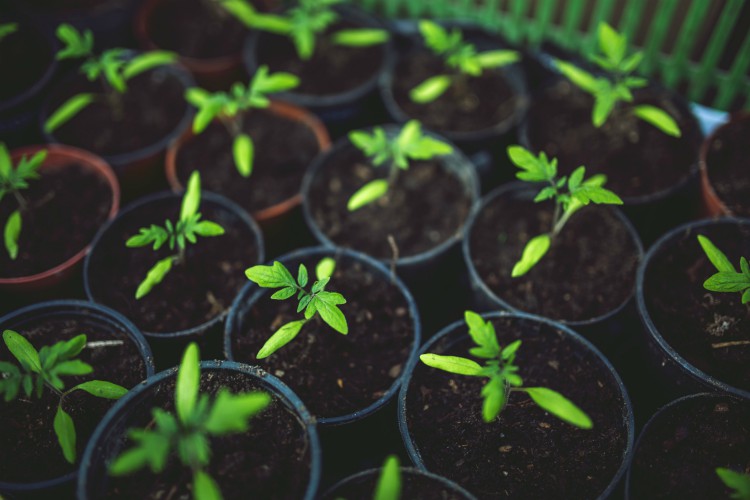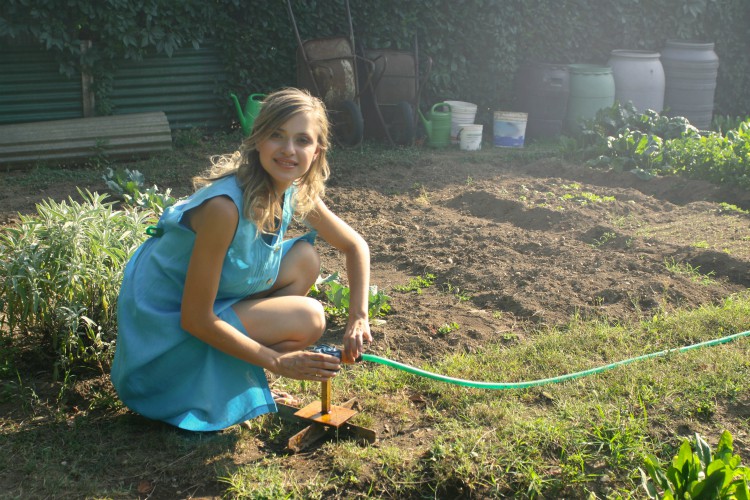
We may earn money from the companies or products mentioned in this post.
This article on compost is sponsored by The Good Stuff and Coupons.com. All opinions are my own.
Any good gardener knows that compost will significantly benefit their garden. Whether you’re planting a large field of vegetables, or a small flower garden compost will increase the health of your plants.

You may also enjoy:
Upcycled Garden Center
Spring Gardening: Time to Prep
When I was a kid, we kept an old ice cream bucket under the sink. After every meal we were expected to scrape certain of our scraps into this bucket. When the bucket was full, it would be someone’s job to trek it outside and into the woods where the chicken wire fence made a crudely placed compost pile.
For years we did this. It was never a favorite chore, but if it meant getting out of cleaning something else, I was happy to take the time. Often I would see wild animals enjoying our scraps, and once a beautiful white tailed deer.
There was always one question I never got answered though – what was the point? Sure it meant less garbage, but now we had this extremely stinky pile of waste out in the woods. Thankfully, it was in an area we kids never played near. Or perhaps we never played near it, because of the stench.
So while we had a compost pile and we had a garden, I don’t believe my mother ever used it in the garden. On the up side, the forest was getting lots of extra nutrients, we were feeding wildlife, and on the rare year, we would grow a watermelon or cantaloupe right out of the compost heap!
So with that experience behind me, here’s what you should know if you want to start composting.
A Beginners Guide to Compost
I’ll go over the basics here, but for a more comprehensive guide on how to compost, follow that link.
Size Matters

How big your compost heap should be, will depend on how big your garden space is. If you only have house plants, you don’t need to compost everything. In fact, a small, indoor counter-top compost bin will work very well for your needs. Amazon sells a variety of these, and they are designed to keep the smell contained as well.
If however, you have a larger outdoor garden, you will probably want a larger pile for your compost, and it will need to be outdoors. For the hobby gardener with just a few garden beds, a medium sized single bin will be your best friend. You can purchase these on amazon, or build one yourself.
For the more serious gardener, you will probably want a larger multi compartment bin. Bins like this allow you to fill one compartment with compost-able items, and then continue filling the next bins, while the first works on turning itself into usable compost. Currently my mother has a 3 bin compost my brother made her, and she finally uses it to feed her garden.
What Goes In It?

The only rule I remember as a kid when adding our scraps to the compost bin, was no meat, bones, or dairy. Everything else had better be added to that bucket or we’d risk my mothers frustration.
Turns out, there’s actually quite a bit of do’s and don’ts with composting. A good compost contains what we call green and brown materials. Green materials are your kitchen scraps, dead weeds, grass clippings, etc. Brown materials are dry leaves, newspapers (shred them for quick break down), and sawdust.
The mix of green and brown materials are adding both nitrogen and carbon to your compost. These are the chemicals needed to break down the scraps into a usable compost.
Using Your Compost

Now you have a scrap pile, what are you going to do with it? Don’t be like my mom and just pile it up, hoping to one day use it. Actually use it! Your garden will thank you. The environment will thank you.
When the compost turns dark brown, maybe even black and has a nice earthy smell to it, that is when it is ready to use. Here’s the thing, though, composting takes time. At some point you will need to stop adding to your pile, and let it turn into the usable material. Again, the size will matter on how long this process takes.
Once it is ready though, the real fun begins. Compost can be spread across your garden in 1-2 inch layers. After applying the compost, water it to help it seep into the soil faster. For indoor plants, the idea is the same, just on a smaller scale.
You can also use your compost in your lawn. Spread it out across the lawn, sprinkle some water on top, and give it a little time to seep into the lawn. Your grass will love it!
I hope this helps encourage you to start composting! Whether you’re new to gardening, or experienced but never tried composting, your garden is going to be so happy with all the added nutrients it gets this year.
Hello Adelina! Such an informative blog. I need to know how we can compost because my hobby is gardening. Your blog is very useful and helpful for all beginners. Keep posting!
Maybe a good idea to use weed barrier in the garden, what do you think about it?
You really did a great job to share this amazing compost guide. I really enjoy this reading. Thank you for sharing this article.
vertigovisual recently posted…Why is VR so Expensive?
This is so much helpful and amazing content of compost. I really love this reading. Thank you for sharing it.
Offive Store recently posted…Wooden Balance Board For Kids
such a great blog and really too good tips about the help us information thanks sharing this article
Informative post I really love this reading. Thank you for sharing it.
William son I knew that
Your blog has piqued a lot of real interest. I can see why since you have done such a good job of making it interesting. I appreciate your efforts very much.
okbet
I definitely enjoy this .it is a great website and has a nice article .I want to thank you .
Amazing info!!! This post is a valuable resource for anyone looking to start composting at home. It provides practical insights and tips to make the composting process easy and eco-friendly. If you’re also interested in enhancing your outdoor living space, don’t forget to check out Local Boston Masonry and Construction for expert guidance on masonry and construction projects that can transform your property into a masterpiece!